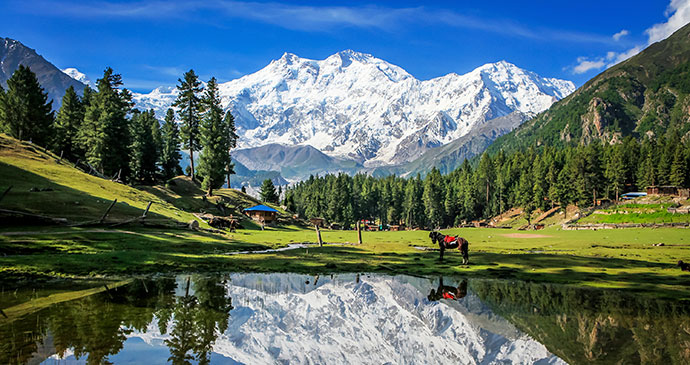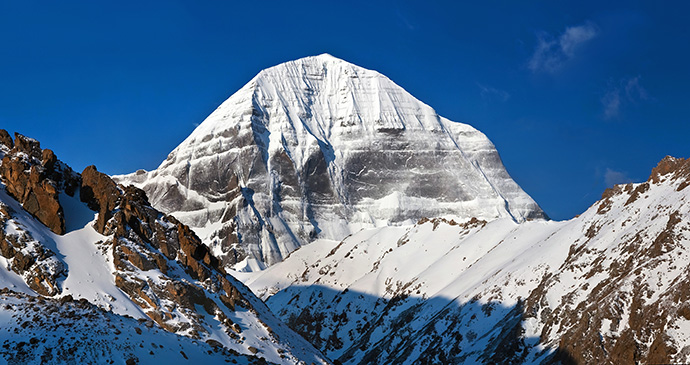A year before this journey began I stood on a dusty pass above a Tibetan valley and looked down into a gathering gloom. Behind me was the darkening bulk of Mount Kailash, a holy mountain for Buddhists and Hindus. All day I had walked round that unclimbed, sacred mountain, among yak trains and Buddhist pilgrims. High above me the ferocious wind on the 22,000ft summit created a constant arc of spindrift against the blue of the sky. But in the dying light of evening I walked away from the path to look for something else. I walked away from where the vertical scratches of the north face met the valley and we had made our camp, past the buttery hive of a monastery that was cocooned in the fold of a cliff. Past the black felt tents where the yak herders’ dogs barked and pulled their chains taut at my approaching footsteps. The track faded where it was cut with tongues of scree.

I caught up with some yak herders. They did not speak English but I knew the Tibetan for what I was looking for.
‘Senge Khabab, Senge Khabab?’ I said, ‘River from the Lion’s Mouth’, the Tibetan name for the source of the Indus River, one of the five great rivers of the Indian subcontinent. They repeated the words back to me, and more words in Tibetan that I couldn’t understand, pointing far away beyond rolling foothills to a distant crease in theland, where perhaps a river turned west, gathered streams and left Tibet. I think they were telling me I wouldn’t get to Senge Khabab that evening, it was too far. They held up their fingers and pointed to their animals. I would need two days, and food and yaks.
In my naivety I had thought that I would come across the source close to the path that encircled the mountain, because I had read that Mount Kailash is the source of four great rivers: the Brahmaputra, the Ganges, the Sutlej and the Indus. But the ridges and ice-encrusted spurs of Kailash were on a Himalayan scale, stretching dozens of miles from the summit.

It was near sunset and cold air was running down the mountains. I stopped walking and sat on a rock. I would not see Senge Khabab on that trip. But this view had set something alight inside me.
An idea was conceived as I sat on that rock and I glowed with the excitement of it. I would travel the Indus, mouth to source. I watched the yak herders turn to shadows, then specks, then invisible far away on the scree, but I could still hear the clack of hooves on rock. I began planning a trip that would take me all along this river.
I originally hoped to do it by boat. I researched the possibility of shipping a flat-pack Canadian canoe out to Pakistan which I planned to assemble in the north and sail all the way down to Karachi. But a brief preparatory trip to Pakistan a few months later showed how unwise this would be. In the north the river comprised miles and miles of impossible rapids and in the south the river was so wide and prone to flooding that there were few towns visible from the water, which would make navigation impossible and the journey perhaps rather monotonous. Instead I decided to follow it more loosely by train and bus and on foot and use its route to make my way up Pakistan into India and Tibet.